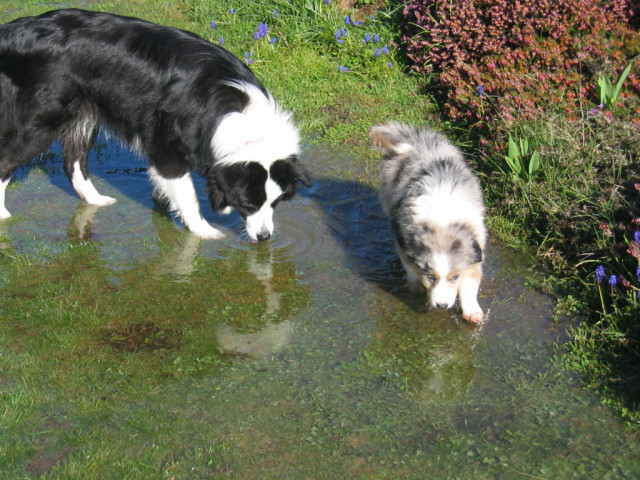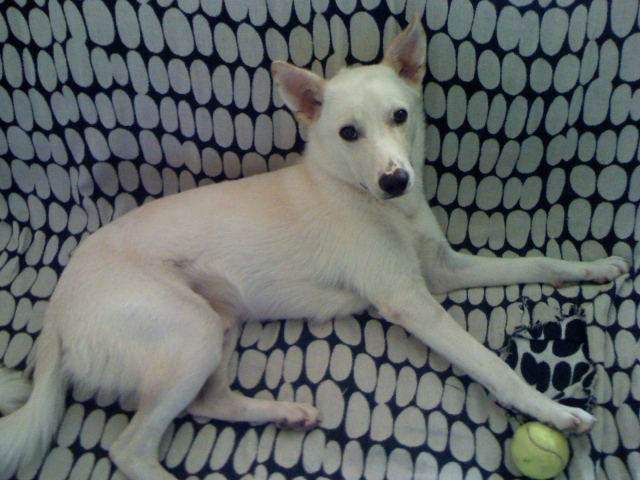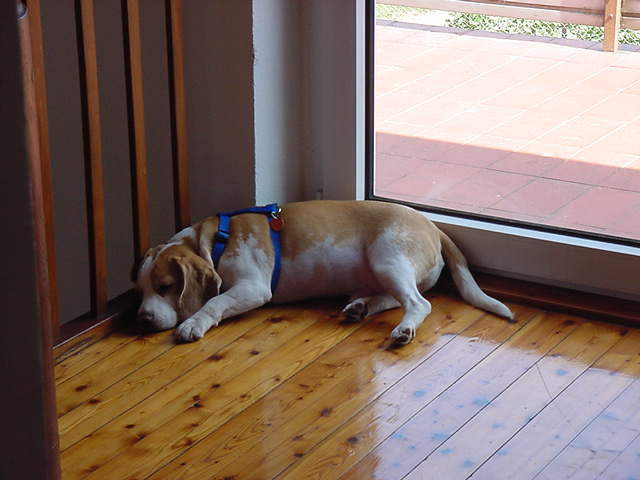QuestionDr. Connor,
In November of '08 an 18 month old min pin was given to us by a local breeder via an ad in the newspaper. After we brought her home we realized that she had not been properly socialized. We have overcome some of her negative behaviors but we are still having problems with submissive urination. It occurs when I need to pick her up. The only way I can get her to come to me with zero problems is if I'm lying on the couch (or sitting in relaxed position). She'l jump up and let me pet & love on her. If I'm standing or kneeling she's very hesitant to come. After constant praise in the kneeling position, I can usually get her to come. Still, many times, she urinates when I attempt to pick her up. There are also times when I need to pick her up for one reason or another and she always urinates when I crouch to pick her up. This is very frustrating as we are still having problems making her understand it is not ok to tee tee inside vs going outside, i.e., not 100% housebroken. Our problems with urinating are compounded with the submissive urination and it is very frustrating and hard to keep our carpets clean. I really hope you can help. Thank you for your time.
Kristin
AnswerThat was NO BREEDER, that was some idiot who makes money trading flesh for dollars. It's disgusting what morons like that do to dogs. This dog is very fortunate to have found you.
Submissive urination is NOT a house training issue (by the way, the Min Pin can be quite difficult to house train, especially one from an abusive and neglectful environment, as was your dog.) It is a FEAR issue. Standing over, even leaning over or kneeling over, is extremely dominant and PICKING a dog UP is hugely dominant. You've had this dog a mere three months and she is attempting to habituate to a totally different life experience (one where she isn't treated as an object, but is loved and cared for.) She's confused and anxious; submissive urination is actually a sign of RESPECT in the dog culture, not a fault.
For house training issues, a wonderful tool can be the dog diaper. Of course, you would have to remove and replace it when the dog urinates in it. Take her over to a pet supply store and fit her for them. You may have to use extra masking tape across the tabs that are actually on the diaper, as they don't hold up very well. It's well worth the investment. DO NOT pick the dog up while she is wearing this (as her submissive urination will soil it and she will then be subject to a change of diaper, further exacerbating the dominance issue.) Put the diaper on her (while popping a treat into her mouth, a good treat like a tiny bit of cheese) only when she is going to be 'at large' in your home (but only in the same room with you, do not allow her run of the house, it's far too soon to put this burden on her.) Take her out on very long lead (so she can scoot around and find a place to urinate) multiple times every day (at least eight) at regular intervals. The moment she squats to pee, in a very soft voice create a signal (i.e., "go pee, go pee, good girl") and then give her a few more minutes to defecate (unless she already has done so, small dogs fed twice a day usually defecate at least once, often twice, a day and this at regular time periods) then bring her back indoors. Take her out ONLY to eliminate right now (don't force other socialization on her when she is still trying to habituate to your household.) Between the diaper (which contains urine close to the dog's body -- something most dogs want to avoid) and taking her out with praise and reward when she eliminates, she should house train much more easily.
Regarding the submissive urination: the dog's body language contains MANY indicators of stress reduction and non-threat, some of them being:
walking toward a dog on a curve, not straight on
walking toward a dog slowly
licking lips
yawning
not making direct eye contact when walking toward a dog
turning your head away and maintaining a low profile (the floor)
You can use these articles of communication yourself when interacting with this dog and SHE WILL understand them. Communicating non-threat, non-dominance and respecting the dog's signals of the same are crucial to rehabilitate a dog that is fearful and submissive. I suggest you go to this site for more information:
http://www.canis.no/rugaas/index.php
While I don't agree with everything Turid Rugaas has to say about dog behavior, her calming signals are excellent. She has written a book on this topic and you may want to obtain a copy from Amazon (or other wholesale distributor.)
To treat the submissive urination, you need to stop obtaining any dominant posture for the next couple of months. This includes picking her up (unless ABSOLUTELY necessary.) There's really no reason to do this at all and it's really interfering with her developing trust in you and her habituation to this new life, however: SHOULD you have to, sit on the floor (after approaching her on a curve and not making direct eye contact or using her name). Wait for her to come over to you and interact with her by praising her, then casually and slowly tuck your hand around her rib cage, put her onto your lap, praise her for a few moments, then stand up with her and QUICKLY do whatever was necessary for you to pick her up to begin with. AVOID it whenever possible (would you "have to" pick up a Rottweiler?) There will come a time when she will welcome your restraint (hugs) and dominance (being picked up), but not now.
FORGET the 'recall' altogether; every time you call her to you and she refuses, she's learning more about not coming to you. Eventually you will be able to develop a recall (and a reliable one), but now is not the time. Instead of obtaining "control" with obedience commands, this sort of interaction should be fun and rewarding for both of you and NOT involve any behavior in the dog that calls for direct approach by either one of you, standing over her by you, etc. Try initiating a simple trained behavior ("sit", but use a different word) using a method that is designed around FUN:
http://www.dogplay.com/Activities/obedience.html
Never use any method of training that requires coercion, correction or anything negative. Dogs respond to POSITIVE reinforcement (that is the nature of their culture, acquiescence, not coercion), and this dog in particular absolutely requires it.
Attempt to calm her fears by living with her in a manner that promotes trust in you; read your homework assignments; give it another month or so, and then report back.

 Nightmares?
Question
Beethoven
Hi Melissa, Ive had my very h
Nightmares?
Question
Beethoven
Hi Melissa, Ive had my very h
 Dog in Heat?
QuestionLily and Jorge
QUESTION: Hello,
We have
Dog in Heat?
QuestionLily and Jorge
QUESTION: Hello,
We have
 Dog walking problems
Question
Snickers
I have been trying to train my dog SN
Dog walking problems
Question
Snickers
I have been trying to train my dog SN
 Post bladder surgery potty training for INDOORS!
QuestionTiki
QUESTION: Dear Dr. Connor,
My 10 ye
Post bladder surgery potty training for INDOORS!
QuestionTiki
QUESTION: Dear Dr. Connor,
My 10 ye
 licking the floor not stop
QuestionGeorgie
QUESTION: Hi,
I have a 7 year ol
licking the floor not stop
QuestionGeorgie
QUESTION: Hi,
I have a 7 year ol